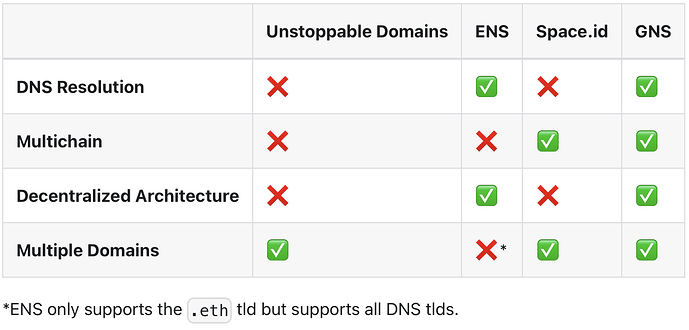We’re excited to announce that we launched Gnosis Name Service - your lifelong domain on Gnosis Chain.
You can find and try us here: https://app.gns.exchange
To help you navigate the world of GNS, we want to share a bit more here. However, if you still have questions after reading this page, don’t hesitate to get in touch with us on Twitter. We will be happy to answer all of your questions there.
At Gnosis Name Service, our mission is to revolutionize multi-chain domain management by providing the most decentralized and user-friendly solution. We strive to bridge the gap between different blockchain networks, enabling seamless navigation and interaction across multiple chains with Gnosis Chain at the centre.
So What is GNS?
Like other web3 domain services like Ethereum Name Service (ENS), our innovative solution lets you map human-readable domains to machine-readable identifiers, giving you the advantage of not having to enter long crypto addresses anymore. GNS comes with all of the functionality you know from ENS and other domain services but also delivers key improvements to existing solutions.
GNS comes with a lot of benefits
- GNS is fully tamper-proof and resolves 100% on-chain
- Life-long domains with no need for costly renewal and management of your domains
- The initial top-level domain is .gno, allowing you to leverage your web3 domain name in the Gnosis Chain Ecosystem
- GNS will implement a full suite of different domain names, allowing you to be more individualistic than ENS, which limits you to .eth domains
So how does it work?
Gnosis Name Service (GNS) has two main components: The registry and resolvers. The GNS registry is a single smart contract that keeps track of all domains and subdomains. It stores three important pieces of information for each domain, including the owner. The owner can be a user or a smart contract. A registrar, which is also a smart contract, owns a domain and grants subdomains to users based on specific rules defined in the contract.
Translating names into addresses happens at the resolver level in GNS. Any contract that adheres to the relevant standards can act as a resolver. There are general-purpose resolver implementations available for users with simple requirements, such as providing a relatively stable address for a name that doesn’t change frequently.
Different types of records, such as cryptocurrency addresses or IPFS content hashes, have their own methods that a resolver must implement to provide those records. The standardization process allows for creating new record types without needing to modify the GNS registry or existing resolvers.
Resolving a name in GNS is a straightforward process: First, you ask the registry which resolver is responsible for the name. Then, you ask that resolver for the answer to your query.
GNS exclusively uses fixed-length 256-bit cryptographic hashes. To generate the hash from a name while maintaining its hierarchical properties, the Namehash process, similar to ENS, is followed.
Through the GNS web app, you can interact with minted .gno domains and buy your own. We differentiate between five tiers of domains.
- 1 letter domains (e.g. a.gno)
- 2 letter domains (e.g. ab.gno)
- 3 letter domains (e.g. abc.gno)
- 4 letter domains (e.g. abcd.gno)
- 5+ letter domains (e.g. abcdefg.gno)
So how do we compare?
There are already a few Web3 name services. Unstoppable Domains, ENS, and Space.id to name the biggest players on the market. However, we believe that Gnosis Name Service is uniquely positioned and comes with many advantages over the existing solutions. In the following, we will look at each of them and compare them to us.
ENS:
ENS is deployed on Ethereum only. It was not built with extensibility in mind, and therefore, multichain capabilities are limited. While there is the opportunity to link to different chains, the domains live on the Ethereum mainnet exclusively. Being “battle-tested,” we believe that Ethereum Name Service has a strong foundation that we can build and improve on.
SpaceID
The biggest question when designing a cross-chain system is: How do I bridge between chains? Space.id tackled this problem by utilizing on-chain oracles that talk to Lucas. Well, who is Lucas? No one knows. All that can be found in their publications is this article, explaining that all chains will contact Lucas and Yoda. This not only raises this question about the exact process but also about centralization and concentrated control and goes against our ethos and that of Gnosis. Thinking about utility SpaceID is equally limiting since the solution does not allow to store any Metadata.
During the launch period of our product we will focus on expanding community engagement, integrations, as well as improving on existing functionality
Throughout our roadmap, we are committed to continuous improvement, feedback integration, and collaboration with the GNS community. As we move forward, we will remain dedicated to our mission of revolutionizing multi-chain domain management and building a decentralized future for digital identities.
The end goal for us is a community-owned project that is fully decentralized, transparent, and fair.
Want to try out GNS? Look no further: https://app.gns.exchange
